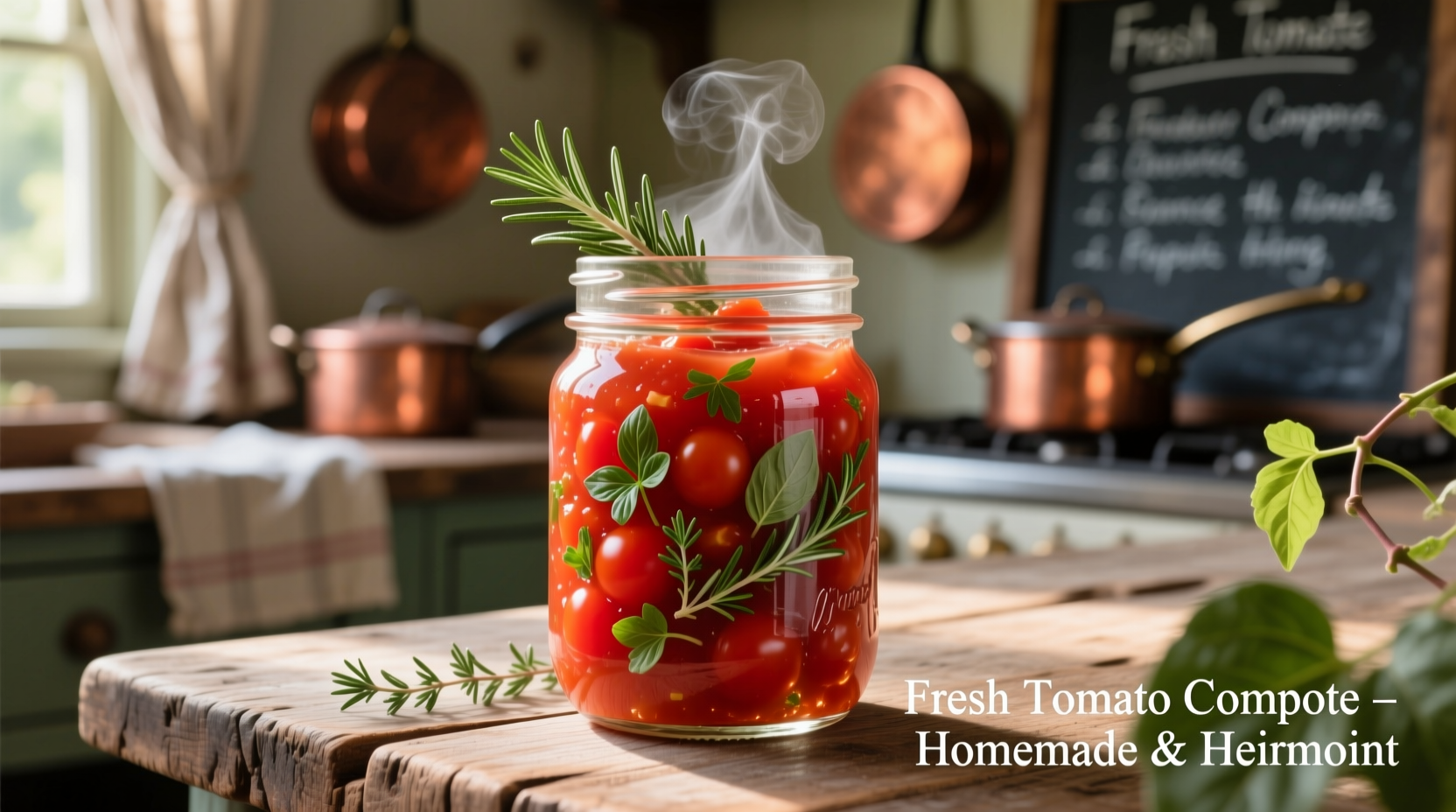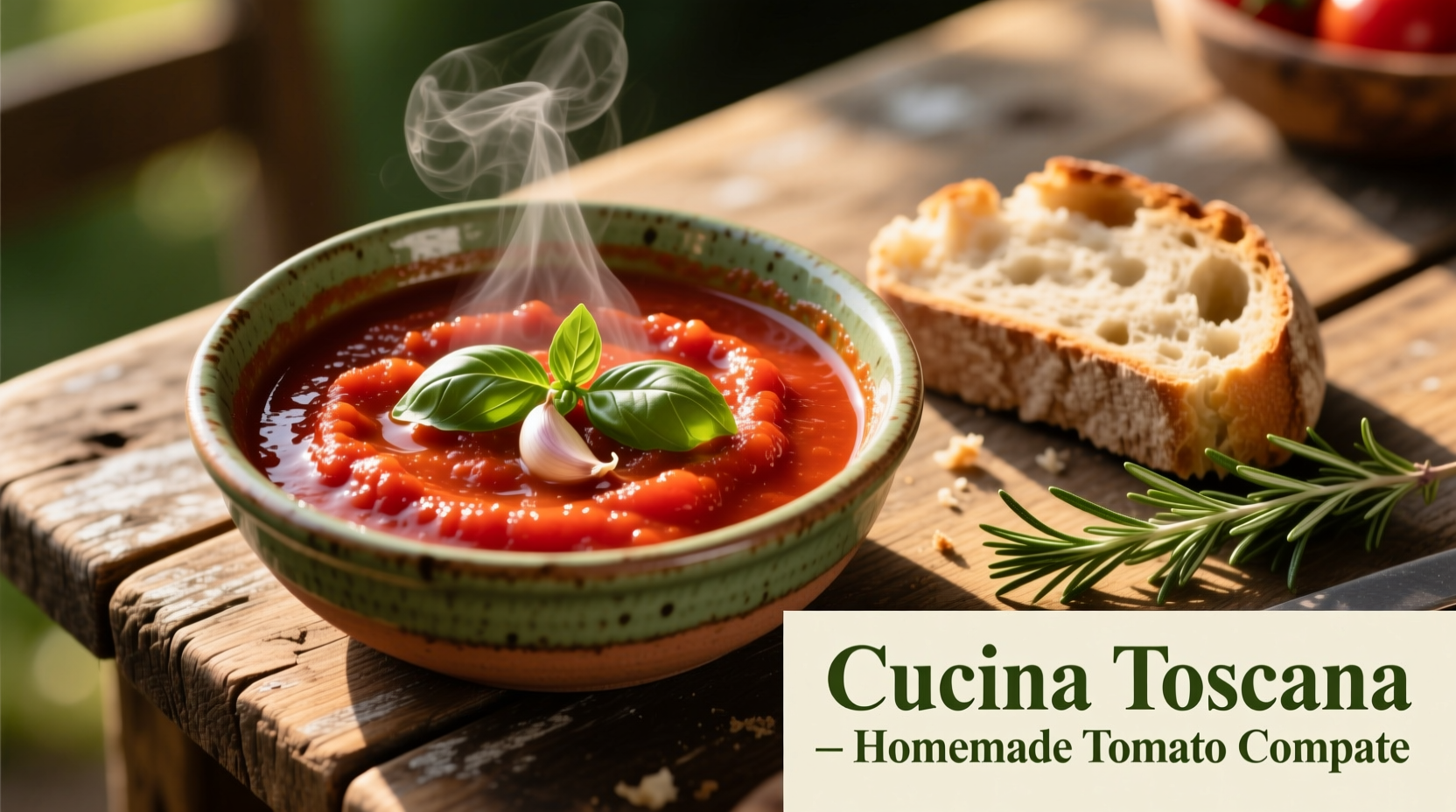Discover how this simple yet sophisticated preparation transforms ordinary tomatoes into a culinary powerhouse. Whether you're elevating breakfast dishes, enhancing proteins, or creating memorable desserts, homemade tomato compote delivers restaurant-quality results with minimal effort. This guide provides everything you need to master tomato compote—from selecting the perfect tomatoes to troubleshooting common issues—with science-backed techniques that guarantee success every time.
What Exactly Is Tomato Compote?
Tomato compote occupies a unique space between jam and sauce. While tomato sauce breaks down completely into a smooth liquid, compote preserves recognizable fruit pieces through gentle simmering with sugar and acid. The term "compote" originates from the French word for "stew," reflecting its preparation method. Unlike chutney, which features vinegar and spices for preservation, compote emphasizes fruit integrity with subtle sweet-tart balance.
| Preparation | Texture | Sugar Content | Primary Use |
|---|---|---|---|
| Tomato Compote | Chunky, distinct pieces | Moderate (15-20%) | Versatile condiment |
| Tomato Sauce | Smooth, uniform | Low (2-5%) | Cooking base |
| Tomato Jam | Gel-like, spreadable | High (30-40%) | Sweet applications |
The Science Behind Perfect Texture
Successful tomato compote hinges on understanding pectin behavior. Tomatoes contain natural pectin that thickens when combined with sugar and acid. The USDA's FoodData Central confirms that ripe tomatoes contain 0.5-1.0% pectin by weight—enough to create structure without gelatin. Cooking below 190°F (88°C) preserves fruit integrity while allowing pectin to activate. Exceeding this temperature causes cellular breakdown, turning your compote into sauce.
Choosing Your Tomatoes Wisely
Not all tomatoes work equally well. For optimal results:
- Roma varieties provide ideal balance of flesh-to-juice ratio
- Heirloom tomatoes add complex flavor but require longer reduction
- Cherry tomatoes work well for quick batches (cook 25% faster)
Avoid underripe tomatoes—they lack sufficient natural sugars for proper setting. The FDA's Food Code guidelines recommend maintaining pH below 4.6 for safe preservation, which naturally occurs in properly prepared tomato compote.

Step-by-Step Preparation Guide
Follow this professional technique for foolproof results:
- Prep (10 minutes): Core and quarter 2 lbs ripe tomatoes (no need to peel)
- Combine ingredients: In heavy-bottomed pot, mix tomatoes with 1/4 cup sugar, 2 tbsp lemon juice, and spices
- Initial simmer: Cook uncovered over medium heat for 15 minutes, stirring occasionally
- Reduce heat: Lower to medium-low and continue simmering 25-35 minutes until thickened
- Final check: Proper consistency coats the back of a spoon without running
Culinary Applications Across Cuisines
Tomato compote's versatility spans global cooking traditions. In Mediterranean cuisine, it serves as a base for shakshuka. Scandinavian chefs pair it with cardamom for open-faced sandwiches. Modern American restaurants use it as a sophisticated alternative to ketchup. The Encyclopedia Britannica notes that tomato preparations evolved significantly after the 18th century when Europeans overcame initial fears about tomato toxicity.
Storage and Safety Guidelines
Proper storage ensures both safety and quality:
- Refrigeration: Store in airtight container for up to 2 weeks
- Freezing: Portion into ice cube trays, then transfer to freezer bags (6 months)
- Canning: Process in boiling water bath for 15 minutes for shelf-stable storage
The National Center for Home Food Preservation confirms that properly acidified tomato compote (pH < 4.2) remains safe for 12-18 months when canned using standard procedures. Always check seals and discard if bubbling or off-odors appear.
Flavor Variations to Try
Customize your compote with these professional combinations:
- Mediterranean: Add 1 tsp dried oregano and 2 minced garlic cloves
- Spiced: Include 1 cinnamon stick and 3 whole cloves during cooking
- Fruity: Mix in 1/2 cup diced peaches or strawberries
- Herbaceous: Stir in 2 tbsp fresh basil after cooking
Troubleshooting Common Issues
Fix these frequent problems:
- Too watery: Continue simmering uncovered, stirring frequently
- Too sweet: Balance with additional lemon juice (1 tsp at a time)
- Bitter taste: Add 1/4 tsp baking soda to neutralize acidity
- Mushy texture: Reduce cooking time and avoid over-stirring











 浙公网安备
33010002000092号
浙公网安备
33010002000092号 浙B2-20120091-4
浙B2-20120091-4